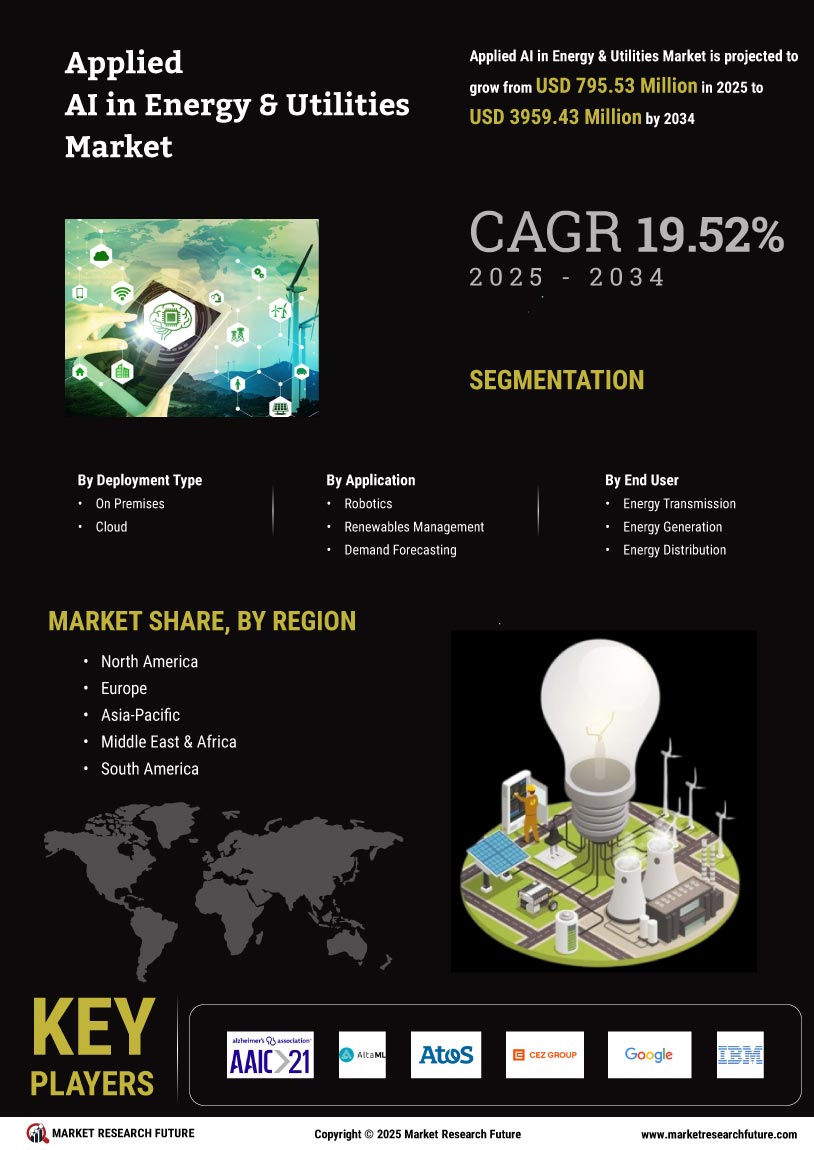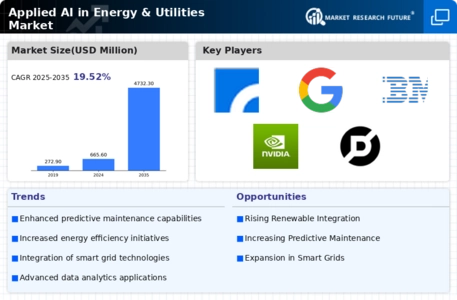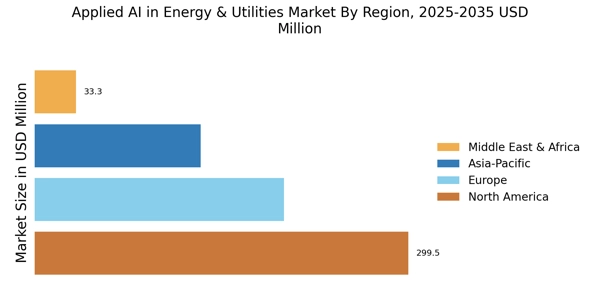Enhanced Energy Efficiency
The Applied AI in Energy & Utilities Market is increasingly focused on enhancing energy efficiency through advanced algorithms and machine learning techniques. These technologies enable utilities to analyze vast amounts of data from smart meters and IoT devices, leading to optimized energy consumption patterns. For instance, AI-driven analytics can identify peak usage times and suggest adjustments to reduce waste. According to recent estimates, AI applications in energy efficiency could lead to a reduction of up to 20% in energy consumption across various sectors. This potential for significant savings is driving investments in AI technologies, as companies seek to meet regulatory requirements and sustainability goals.
Operational Cost Reduction
Operational cost reduction remains a significant driver in the Applied AI in Energy & Utilities Market. AI technologies streamline operations by automating routine tasks and optimizing resource allocation. For instance, predictive analytics can forecast equipment failures, allowing for timely maintenance and reducing downtime. This proactive approach can lead to substantial cost savings, with estimates suggesting that AI could reduce operational costs by up to 30% in some utility sectors. As companies strive to enhance profitability while maintaining service quality, the adoption of AI solutions for cost management is expected to accelerate.
Customer-Centric Service Models
The shift towards customer-centric service models is reshaping the Applied AI in Energy & Utilities Market. Utilities are leveraging AI to enhance customer engagement through personalized services and proactive communication. By analyzing customer data, AI can predict usage patterns and offer tailored energy-saving recommendations. This approach not only improves customer satisfaction but also fosters loyalty. Recent studies suggest that utilities employing AI-driven customer engagement strategies can see a 15% increase in customer retention rates. As competition intensifies, the ability to provide personalized experiences will likely become a key differentiator in the market.
Integration of Renewable Energy Sources
The integration of renewable energy sources into existing grids is a critical driver for the Applied AI in Energy & Utilities Market. AI technologies facilitate the management of intermittent energy sources such as solar and wind by predicting energy generation patterns and optimizing storage solutions. For example, AI can forecast solar energy production based on weather data, allowing utilities to balance supply and demand more effectively. As renewable energy adoption continues to rise, with projections indicating that renewables could account for over 50% of global electricity generation by 2030, the role of AI in managing these resources becomes increasingly vital.
Regulatory Compliance and Risk Management
Regulatory compliance and risk management are paramount in the Applied AI in Energy & Utilities Market. Utilities face stringent regulations regarding emissions and operational safety, necessitating the use of AI for monitoring and reporting. AI systems can analyze compliance data in real-time, identifying potential risks and ensuring adherence to regulations. This capability not only mitigates financial penalties but also enhances operational transparency. The market for AI-driven compliance solutions is expected to grow significantly, as utilities invest in technologies that streamline reporting processes and improve risk assessment methodologies.


















Leave a Comment